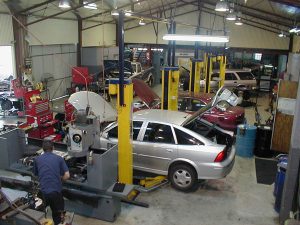A Call For Velocity-Minded Used Vehicle Reconditioning
Road to Reinvention Series
The following is an e-mail shared by used vehicle consultant Tommy Gibbs. His pass-along originates from a used vehicle manager at a Midwest Honda store who read Gibbs’ latest Zinger and asked for help to address a problem with used vehicle reconditioning:
 “It kills me that all other facets of our business have evolved, especially with the integration of vAuto into our Used Car operations. We cannot buy or price or negotiate the way we did five years ago. Yet, we are saddled with an overpriced, slow recon that is only worried about generating six-plus hours per RO, and adding on their 40%-50% parts markup.
“It kills me that all other facets of our business have evolved, especially with the integration of vAuto into our Used Car operations. We cannot buy or price or negotiate the way we did five years ago. Yet, we are saddled with an overpriced, slow recon that is only worried about generating six-plus hours per RO, and adding on their 40%-50% parts markup.
“We have the only depreciating asset in the dealership and get charged every time we turn around. I am averaging 200-plus units a month retailed, and I’m lucky to have a $700 front-end average (after a $400 management fee and $1,300 recon. average). I feel like we could sell 300-plus a month if we really wanted to. But, in the cave man ways of recon., I cannot get the cars through the system fast enough.
“My inventory turn is 17.4. I have 156 vehicles, with only three over 60 days old. My 0-15 day bucket is priced at 95 percent. I feel like I am doing all I can do to get things cranked up, I just need to turn the heat up on the recon!!!”
The used vehicle manager’s note highlights a universal truth for velocity dealers—one that I address squarely in my upcoming book, Velocity Overdrive: The Road to Reinvention: In today’s more time-sensitive and margin-compressed marketplace, dealers must reinvent their used reconditioning processes to fully realize the sales volume and profit potential of their used vehicle operations.
This reinvention needs to reduce the time and costs it currently takes to ready cars for retail.
On time: The best-performing velocity dealers have cars in and out of reconditioning within 48 hours. Some cars may take more time due to parts or specialty work. To maintain the benchmark, these dealers have centralized reconditioning processes (in some cases, taking glass, upholstery and other cosmetic-type work in-house), crafted incentives that reward faster throughput and held managers accountable for fixing up cars fast to increase their profitability potential. Time really is money in today’s business.
On costs: The used car manager’s $1,300 reconditioning average owes partly to the dealership’s emphasis on certified pre-owned vehicles. Beyond that, though, the manager’s note suggests he may be the only one in the dealership who recognizes the degree to which these add-on costs crimp every car’s profitability potential—particularly when market-competitive pricing and high acquisition costs already pose a significant margin pressure. A growing number of velocity dealers are addressing this challenge by reducing mark-ups on service labor and parts, and trimming the scope of reconditioning work when they can. In this way, the dealers are extending velocity principles into fixed operations—they make a little less on every car, but they make more money overall as they increase efficiencies and recondition a greater number of cars every month.
